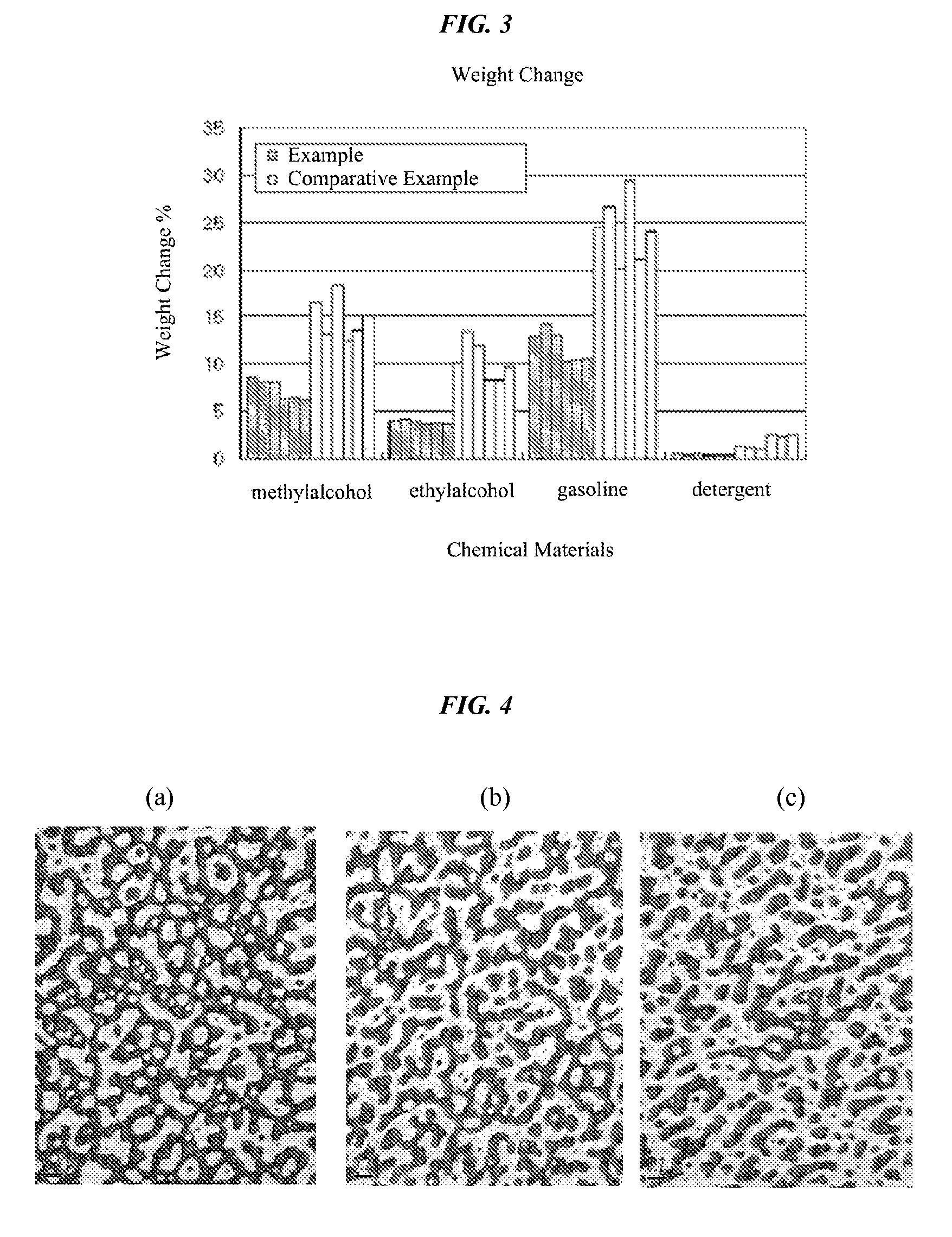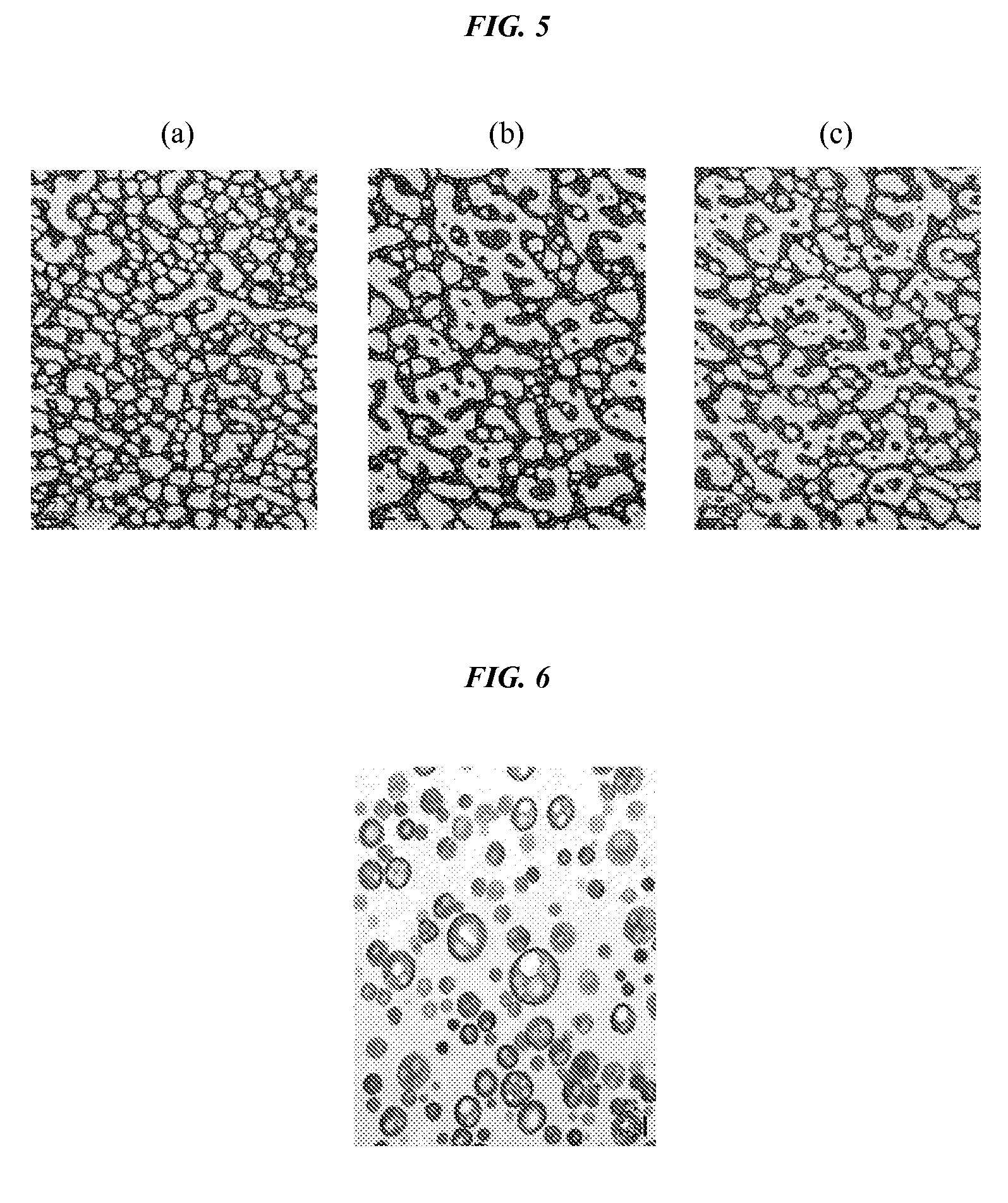Transparent thermoplastic resin and method for preparing the same
a thermoplastic resin and transparent technology, applied in the direction of film/foil adhesives, adhesives, etc., can solve the problems of limited use of mono-component materials in various complex applications, limited application, and difficulty in satisfying good transparency and improved properties, so as to achieve good chemical resistance, good transparency, good chemical resistance
- Summary
- Abstract
- Description
- Claims
- Application Information
AI Technical Summary
Benefits of technology
Problems solved by technology
Method used
Image
Examples
examples
(A) Terpolymer Resin Having Good Chemical Resistance
[0069](a1) poly(methylmethacrylate-acrylonitrile-styrene monomer) copolymer having a weight average molecular weight of 203,000 (Mw) is used, which is prepared by a bulk continuous process with a polymerizing time of 4 hrs, and by adjusting the content of methylmethacrylate to 22.8% and the content of styrene monomer to 74.2% in order to obtain a refractive index of 1.5655 and acrylonitrile of 3% by weight.
[0070](a2) poly(methylmethacrylate-acrylonitrile-styrene monomer) copolymer having a weight average molecular weight of 202,700 (Mw) is used, which is prepared by using a bulk continuous process with a polymerizing time of 4 hrs, and by adjusting the content of methylmethacrylate to 21.3% and the content of styrene monomer to 73.7% in order to obtain a refractive index of 1.5655 and acrylonitrile of 5% by weight.
(B) Aromatic Rubbery Block Copolymer Resin
[0071]Styrene-butadiene block copolymer resin (KK-38 grade), manufactured by ...
examples 1-6
[0074]Components as shown in Table 1 are added to a conventional mixer, and the mixture is extruded through a twin screw extruder (L / D=29, φ=45 mm)=45 mm) at a temperature of 220° C. to prepare a product in pellet form. The pellets are then dried at 80° C. for 3 hours and molded into test specimens to evaluate the properties of the same using a 6-oz injection molding machine at 180-280° C. with a mold temperature of 40-80° C.
PUM
| Property | Measurement | Unit |
|---|---|---|
| refractive indices | aaaaa | aaaaa |
| transparency | aaaaa | aaaaa |
| transparency | aaaaa | aaaaa |
Abstract
Description
Claims
Application Information
 Login to View More
Login to View More - R&D
- Intellectual Property
- Life Sciences
- Materials
- Tech Scout
- Unparalleled Data Quality
- Higher Quality Content
- 60% Fewer Hallucinations
Browse by: Latest US Patents, China's latest patents, Technical Efficacy Thesaurus, Application Domain, Technology Topic, Popular Technical Reports.
© 2025 PatSnap. All rights reserved.Legal|Privacy policy|Modern Slavery Act Transparency Statement|Sitemap|About US| Contact US: help@patsnap.com



